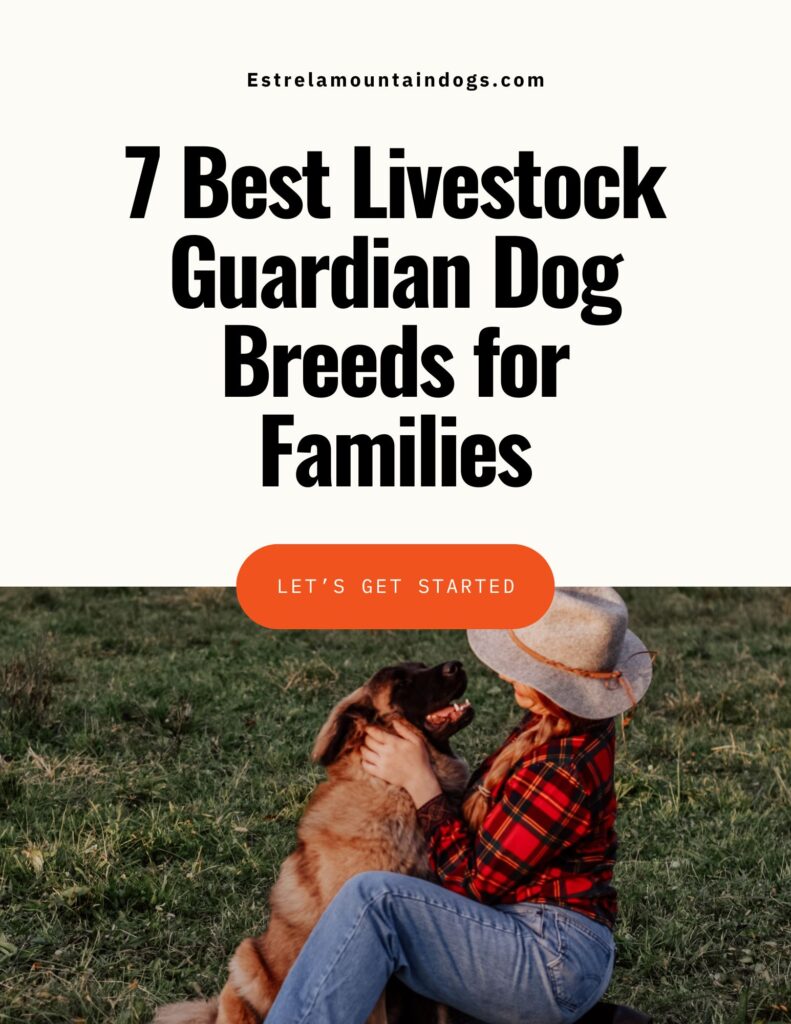
7 Breeds of Livestock Guardian Dogs for Families
Bringing a livestock guardian dog (LGD) into your family is more than choosing a pet—it’s welcoming a centuries-old tradition of loyalty, courage, and devotion into your home. But what are the best Livestock Guardian Dogs for Families? And what is a livestock Guardian Dog? Livestock Guardian dogs were bred to protect flocks of sheep and goats against wolves, bears, and thieves, but they have also proven themselves to be gentle, trustworthy companions for children and families.
Unlike typical guard dogs, LGDs are independent thinkers who make decisions on their own. They are not driven by prey or play instincts but by a calm, steady dedication to guarding what they consider “theirs.” For families who want both protection and companionship, certain LGD breeds stand out for their ability to balance fierce devotion with gentle affection.
In this article, we’ll explore 7 breeds of livestock guardian dogs that families love, looking at their history, temperament, training needs, and suitability for life both in the home and on the farm.
Best Livestock Guardian Dogs For Families Comparison Chart:
| Breed | Origin | Size | Temperament with Families | Major Cons | Best For |
|---|---|---|---|---|---|
| Estrela Mountain Dog | Portugal | 90–130 lbs | Loyal, protective, calm with children | Intelligent, aloof with strangers, digging habits | Families with land who want a balanced guardian and companion |
| Great Pyrenees | France/Spain | 85–160 lbs | Gentle giant, patient, affectionate | Heavy shedding, stubborn, tends to roam, very large | Families who want a gentle dog indoors and strong guardian outdoors |
| Anatolian Shepherd | Turkey | 90–150 lbs | Loyal, courageous, steady protector | Strong-willed, resource guarding tendencies, high prey drive | Experienced families seeking a serious working guardian |
| Maremma Sheepdog | Italy | 65–100 lbs | Devoted, affectionate, calm indoors | Wary of strangers, independent, barks a lot, not suited to urban life | Rural families with livestock or large properties |
| Kuvasz | Hungary | 90–115 lbs | Noble, affectionate with family, protective | Territorial, overly protective, prey drive, slow to mature | Families with patience and training experience |
| Tibetan Mastiff | Himalayas | 90–150 lbs | Loyal to family, majestic presence | Touchy, aggressive tendencies, aloof, night barking, heavy coat blow | Very experienced owners wanting a strong guardian |
| Spanish Mastiff | Spain | 140–200 lbs | Gentle, tolerant, affectionate with children | Extremely unhealthy in many lines, inbred, joint issues, loss of working function | Families wanting a giant companion, not an active livestock guardian |
1. Estrela Mountain Dog
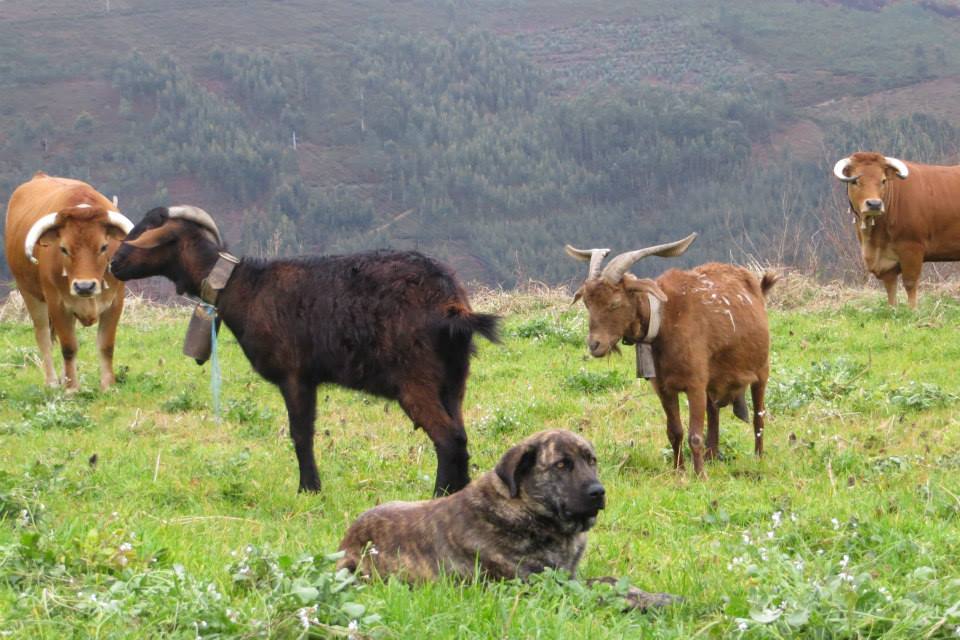
The Estrela Mountain Dog, one of the oldest breeds from Portugal, originates in the rugged Serra da Estrela mountains. Bred to guard flocks against predators, Estrelas embody strength, loyalty, and wisdom. They are large, powerful dogs with a natural suspicion of strangers, but they bond deeply with their families.
Temperament for Families
Estrelas are known for their gentle but protective nature. They form close bonds with children, watching over them with patience and care. While they can be independent, they are also affectionate with those they love. They’re not hyper dogs—they tend to be calm indoors, saving their energy for outdoor watchfulness.
Training & Socialization
Because they are intelligent and independent, Estrelas benefit from early training and consistent boundaries. Socialization from puppyhood is key, especially introducing them to family routines and visitors. Families appreciate that while Estrelas are protective, they are not unnecessarily aggressive—they assess situations carefully before acting.
Why Families Love Them
Families choose Estrelas for their balance of power and devotion. They’re not only capable guardians for property and livestock, but also loyal companions who thrive on family connection. Their bravery is legendary, but so is their loyalty to children and household members. See Available Estrela Mountain Dog Puppies Here.
Estrela Mountain Dog – Cons
The Estrela Mountain Dog is a devoted Portuguese livestock guardian dog, but families should note a few challenges:
- Strong-willed: Independent nature can make obedience commands more challenging. They are not golden retrievers and will make independent thinking decisions.
- Aloof with Strangers: The Estrela breed standard specifically expects them to be aloof with strangers but not aggressive.
- Vocal and territorial: Prone to barking if someone enters the property and will hold their ground with intruders or stray dogs.
- Athletic and Strong: They require secure fencing, just like any other livestock guardian dog.
- Shedding: Will blow their coat in spring. Especially the long-haired Estrela Mountain Dogs.
- Digging habits: They retain some of their primitive digging abilities and will attempt to dig dens in the heat etc.
Learn More:
- AKC Estrela Mountain Dog Profile
- Estrela Mountain Dog Breed Information
- Estrela Mountain Dog Association of America
2. Great Pyrenees
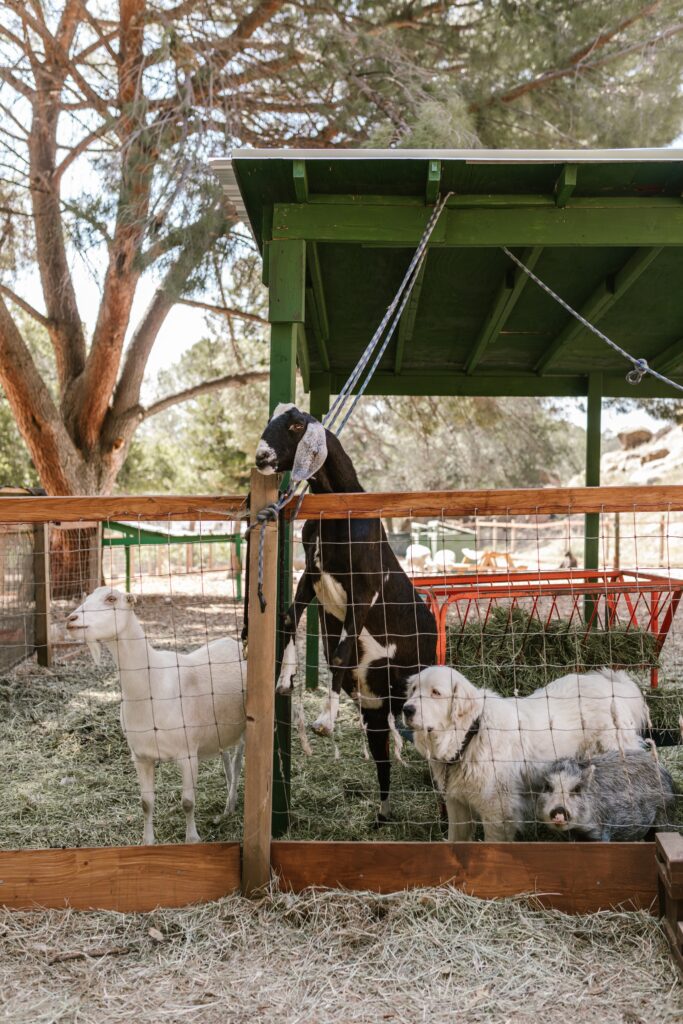
The Great Pyrenees is one of the most well-known livestock guardian dogs, originating from the Pyrenees Mountains between France and Spain. For centuries, they’ve been relied upon to protect flocks from wolves and bears.
Temperament for Families
Often called “gentle giants,” Great Pyrenees are patient and tolerant with children. They are calm indoors but vigilant outdoors, patrolling boundaries and keeping a close watch on their family. They are affectionate, steady, and generally trustworthy, though their size requires supervision around very small children.
Training & Socialization
Pyrenees are known for their stubborn streak, so consistency is important. They often mature slowly, taking two to three years to fully grow into their temperament. Families should prepare for secure fencing, as Pyrs are notorious for wandering.
Why Families Love Them
The Great Pyrenees combines gentleness with fierce protection. Indoors, they are affectionate family dogs; outdoors, they are serious guardians who will fearlessly protect loved ones. Families often say they bring peace of mind, knowing their Pyrenees is watching over everything.
Great Pyrenees – Cons
The Great Pyrenees is one of the most popular guardian dog breeds for families, but this has come at a cost to the working instincts and health of the breed:
- Heavy shedding: Their thick double coat requires frequent grooming and leaves hair throughout the house.
- Wandering habits: Known as escape artists, Great Pyrenees need secure fencing to prevent roaming. They may not roam anymore then any other LGD breed but because of their immense popularity they have the reputation of being a persistent roamer and heavy barker.
- Stubborn with training: They are independent thinkers and may ignore commands.
- Size and Health challenges: At well over 100 pounds, they can be intimidating and difficult for new dog owners to manage. Many backyard breeders are not doing any health testing and this is an issue as well.
- Watered Down Instincts: Because of the huge popularity of the breed in the United States it can be hard to find a GP puppy that has a working temperament and isn’t a fluffy rug type dog.
Learn More:
3. Anatolian Shepherd
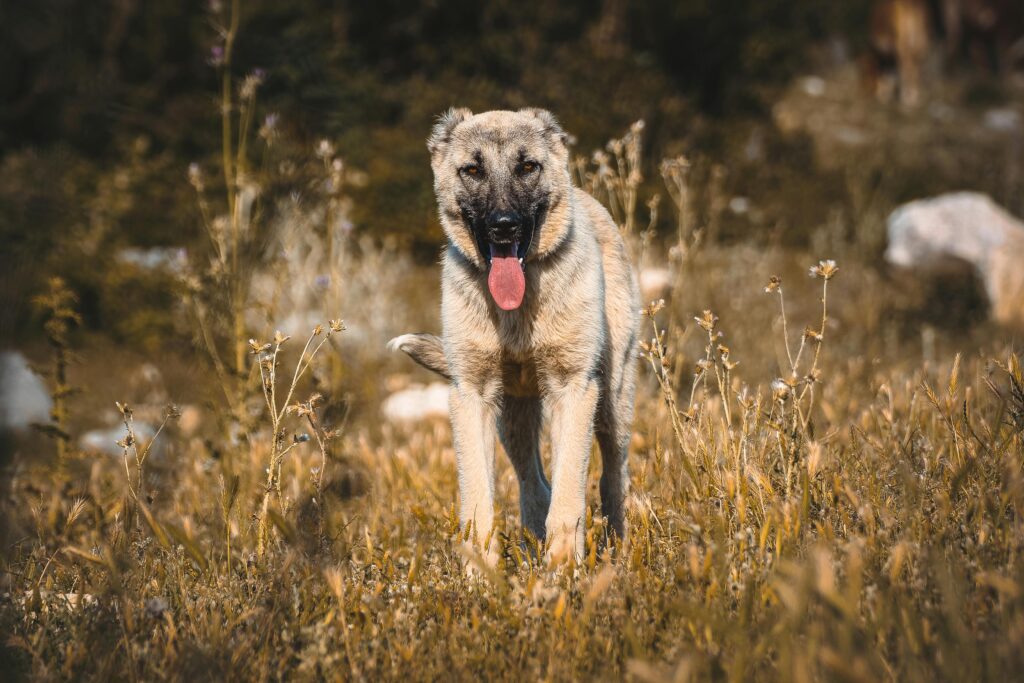
The Anatolian Shepherd, from Turkey, is one of the oldest guardian breeds in the world. They were bred to work independently, making life-and-death decisions to protect livestock from wolves, jackals, and even bears.
Temperament for Families
Anatolians are intensely loyal to their people but can be wary of strangers. They’re watchful, steady, and serious about their work. With children, they tend to be patient protectors, although their size and strength mean supervision is always necessary.
Training & Socialization
This breed thrives with families who respect its independence. Anatolians do best with firm but fair leadership. They are intelligent and learn quickly, but they won’t tolerate harsh training methods. Socialization with children, guests, and other pets from a young age helps them adapt to homestead environments.
Why Families Love Them
Families admire the Anatolian’s courage, independence, and loyalty. They are true working dogs, yet they form unbreakable bonds with their families. Their deep bark and confident presence alone are enough to deter intruders.
Anatolian Shepherd – Cons
Anatolian Shepherds are fearless livestock guardians, but they can be a challenge for families:
- Strong-willed and independent: These dogs often resist authority, making them harder for first-time owners.
- Overly protective: Without early socialization, they may act aggressively toward strangers.
- Less affectionate: While loyal, they aren’t always cuddly or social with strangers.
- Protective instincts: They need an owner that can set boundaries and knows how to manage a dog that is “a lot of dog”.
- Need for land and exercise: They are best suited to families with acreage or farms.
Learn More:
4. Maremma Sheepdog
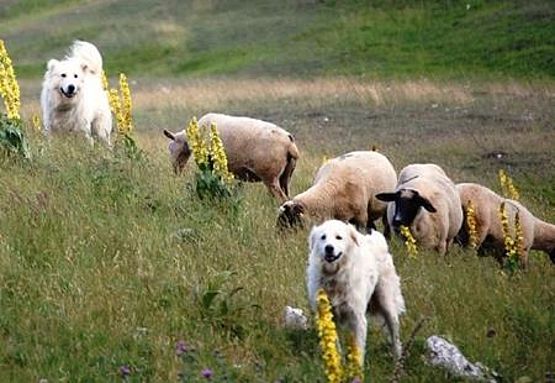
The Maremma Sheepdog is an Italian guardian breed with a heritage that stretches back over 2,000 years. These dogs have long watched over flocks in the mountains of central Italy, where they are still used today.
Temperament for Families
Maremmas are affectionate and deeply loyal, bonding strongly with their people. They are protective without being overly aggressive, making them a good fit for families who want a dog that is serious about its role but still gentle indoors.
Training & Socialization
Maremmas need early socialization to teach them what’s expected in a family home. They do best with owners who can provide clear guidance while respecting their independence. Consistency and patience are key, as they don’t always respond like obedience-focused breeds.
Why Families Love Them
Families appreciate the Maremma’s combination of gentleness and protectiveness. These dogs are calm and affectionate at home but vigilant when it comes to watching over property and family members. Their devotion is unwavering.
Learn More:
5. Kuvasz
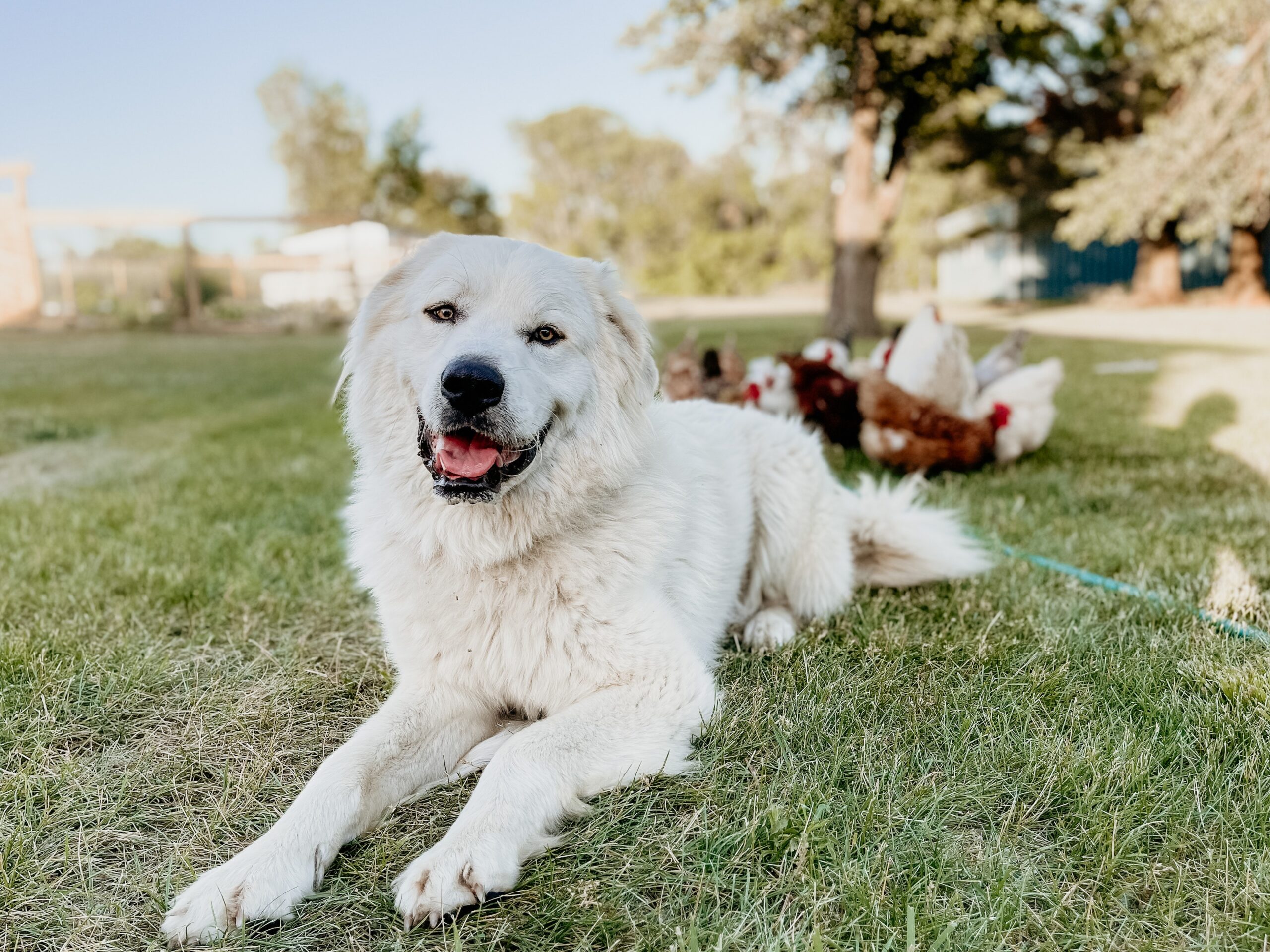
The Kuvasz is a Hungarian guardian breed with royal roots. Historically, they guarded estates and livestock, trusted for their intelligence, bravery, and snow-white coats.
Temperament for Families
Kuvasz dogs are dignified and noble, with a strong sense of responsibility. They can be aloof with strangers but are affectionate and protective with family members. Their courage and loyalty make them outstanding guardians.
Training & Socialization
Kuvasz are highly intelligent but independent, which can make training a challenge. They need experienced, confident handlers who respect their heritage as decision-makers. Early socialization ensures they develop into well-balanced guardians.
Why Families Love Them
Families value the Kuvasz for its bravery and deep devotion. They are large, serious guardians but affectionate with loved ones, offering both security and companionship.
Kuvasz – Cons
The Kuvasz, a historic Hungarian livestock guardian dog, is noble and impressive, but families should carefully consider the challenges that come with the breed:
- Difficult to train: The Kuvasz is highly intelligent yet very independent, which makes obedience training frustrating for inexperienced owners.
- Overprotective tendencies: Without consistent early socialization, they may display aggression toward strangers or unfamiliar animals.
- Prey drive issues: Some Kuvasz will chase smaller pets, wildlife, or even running children if their instincts are not managed properly.
- Slow to mature: Kuvasz puppies take years to reach reliable adult behavior, requiring patient families willing to guide them through a long adolescence.
Learn More:
6. Tibetan Mastiff
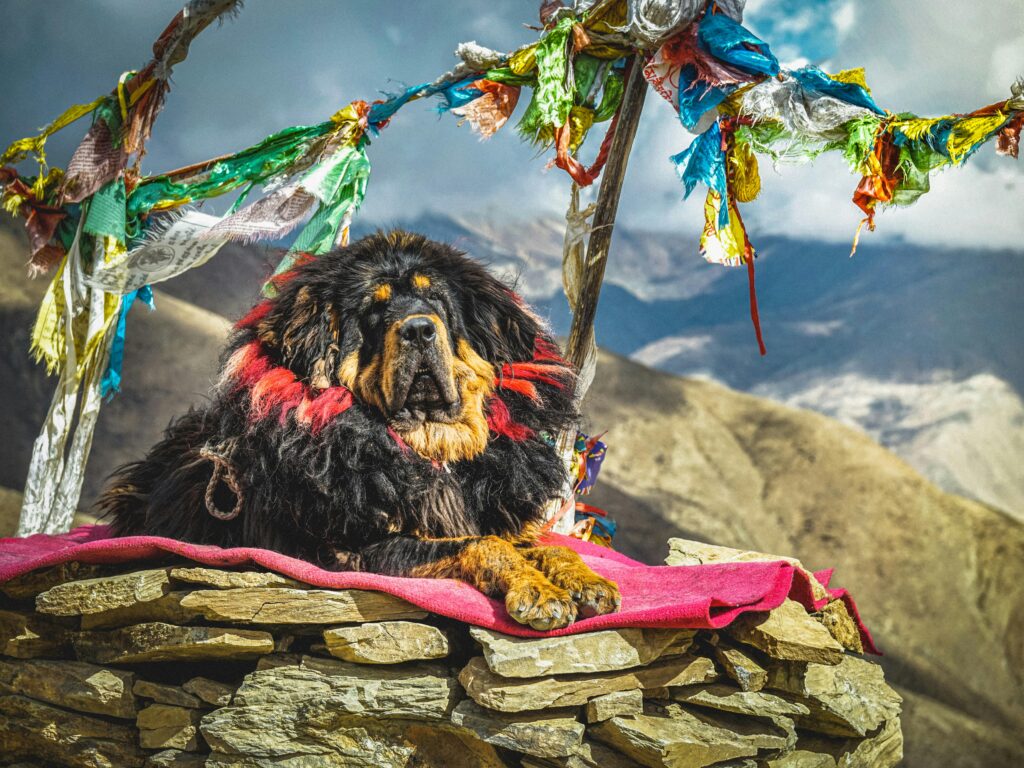
The Tibetan Mastiff is an ancient breed from the Himalayas, where it guarded monasteries and villages. Known for its exotic lion-like mane and bigger then life appearance, this breed is as majestic as it is protective. But unfortunately over the last century most of the Tibetan Mastiffs in the USA have been owned as a status symbol and not as working dogs. The Tibetan Mastiffs that are working dogs are mostly in mixed Livestock Guardian Dog programs where the temperaments may be unpredictable at best.
Temperament for Families
Tibetan Mastiffs are deeply loyal but also highly independent and known to be stubborn.
- They can be a one or 2 person breed meaning they may not bond well with multiple family members or they might attach themselves to their favorite person.
- They are known to be very suspicious of any strangers and can be hard to handle if not contained in the right setup.
- They are not the right breed for farms that have workers coming and going, families visiting etc.
Training & Socialization
Training a Tibetan Mastiff requires patience and consistency. They are strong-willed and won’t blindly follow commands. They are known to be hard to socialize once they are older, and touchy with things like nail trimming, grooming, etc. Early socialization is crucial to ensure they remain balanced and confident.
Why Families Love Them
Most people drawn to the breed fall in love with their exoticness and larger then life appearance. But the Tibetan Mastiff has struggled to maintain its working genetics here in the USA by no fault of its own. They are not the best choice for families especially if the owners do not have experience working with independant thinking, sharp, primitive dog breeds.
Tibetan Mastiff – Cons
The Tibetan Mastiff is one of the biggest livestock guardian dog breeds, but its temperament can be a challenge for families:
- Touchy and aggressive tendencies: This breed can react strongly if it feels disrespected, challenged, or mishandled, making it unsuitable for inexperienced owners.
- Strong-willed personality: Tibetan Mastiffs are highly independent and difficult to train, often ignoring commands they don’t find necessary.
- Aloof with strangers: They are loyal to their person but often distrustful and defensive with visitors.
- Night barking: Their instinct to guard at night can lead to loud, persistent barking.
- Drooling: A common trait in the breed that can be messy for a Livestock Guardian Dog.
- High grooming needs: Their thick coat sheds heavily during seasonal changes, requiring commitment to brushing.
Learn More:
7. Spanish Mastiff
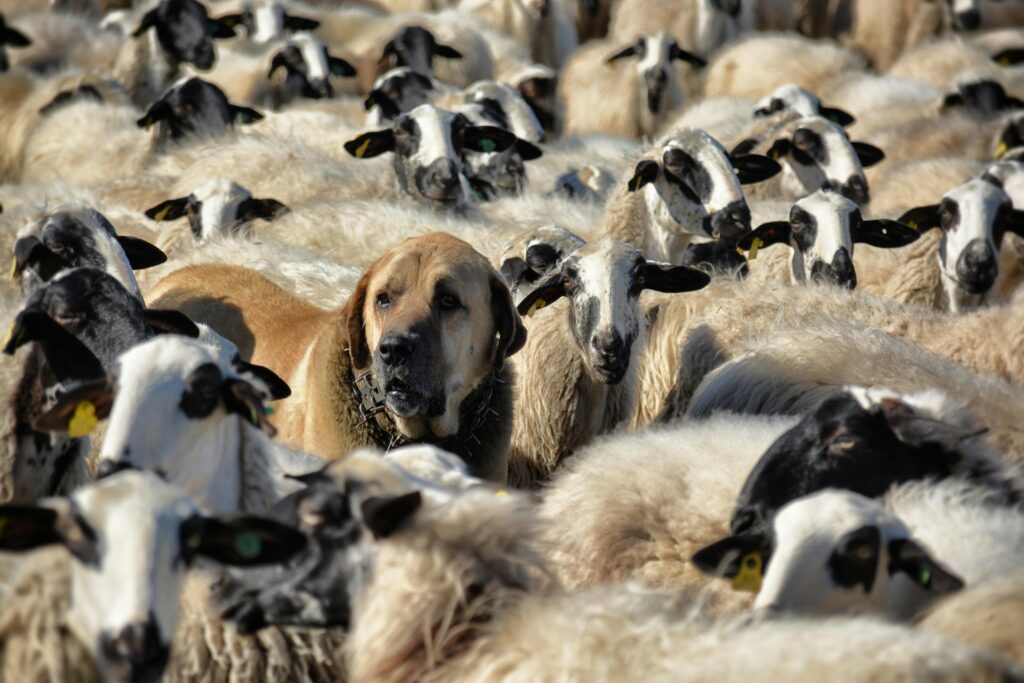
The Spanish Mastiff is a gentle giant, historically used to protect flocks during seasonal migrations in Spain. Known for their calm, tolerant nature, Spanish Mastiffs are both protective and affectionate.
Temperament for Families
Despite their imposing size, Spanish Mastiffs are gentle and patient with children. They are affectionate with their families but vigilant toward threats, making them dependable guardians.
Training & Socialization
Spanish Mastiffs mature slowly, requiring patience and consistent training. They respond well to positive reinforcement and thrive in families who understand their guardian instincts.
Why Families Love Them
Families choose Spanish Mastiffs for their combination of strength and gentleness. They are trustworthy with children, deeply loyal, and fearless protectors of their homes.
Spanish Mastiff – Cons
The Spanish Mastiff was once a legendary livestock guardian dog and still is today in it’s native form. Sadly, in its current purebred state, the breed faces major challenges:
- Loss of original function: Most modern Spanish Mastiffs have completely lost their ability to serve as true working livestock guardian dogs. They are too slow, wrinkled, heavy, and unhealthy to perform the role they were bred for.
- High inbreeding rates: Years of poor breeding practices have reduced genetic diversity, leading to weak immune systems, shortened lifespans, and structural problems.
- Serious health problems: Joint disease, hip dysplasia, heart issues, and mobility problems are common, largely due to extreme size and inbreeding.
- Unsuitable for active farms: Families seeking a reliable guardian for livestock would be disappointed in the show type mastiffs seen today, as most modern Spanish Mastiffs can no longer perform consistent guarding duties.
Because of these concerns, families interested in the Spanish Mastiff should evaluate what they are looking for honestly. Unless carefully sourced from original working lines, today’s Spanish Mastiffs are symbolic “giants” of what should not be done to a guardian breed than they are functional protectors.
If you are searching for a dog like the Spanish mastiff, it would be helpful to consider a Transmontano or a Short-haired Estrela Mountain Dog. Both of these breeds are cousins to the Spanish Mastiff and have maintained the traits that were taken from the Current Spanish Mastiff as we know it today.
Learn More:
Conclusion
Choosing a livestock guardian dog for your family means embracing a breed with centuries of history, wisdom, and dedication. While each of these 7 breeds has its own strengths, they all share a common trait: an unwavering devotion to the people they love.
For families, LGDs offer more than protection—they bring peace of mind, companionship, and a deep connection to a heritage of guardianship that spans centuries. With proper training, socialization, and respect for their instincts, these breeds can become not only guardians of your home but also beloved family members.
👉 Want to learn more about Estrela Mountain Dogs and see which puppies are available now? Contact us here.
Comments +